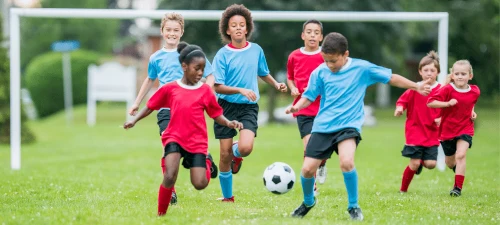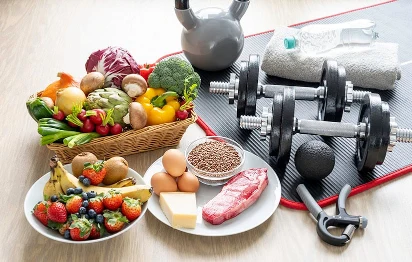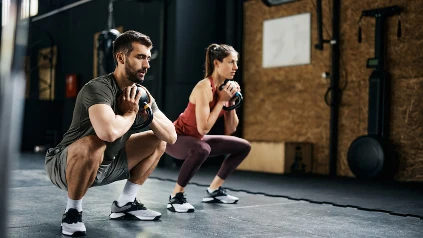From amateurs to professionals: health and sport
Sports and physical activities play a vital role in promoting health and well-being across all levels of participation, from amateurs to elite professionals. Engaging in sports not only improves physical fitness but also enhances mental health, fosters social connections, and cultivates discipline. This comprehensive exploration delves into the relationship between sports and health, examining how different approaches cater to diverse needs and goals. We will discuss the benefits of sports, training methodologies, nutritional strategies, injury prevention, and the mental aspects of athletic performance.
Physical Benefits of Sports Participation
Engaging in sports offers a wide array of physical benefits that contribute to overall health and well-being. Regular participation in sports helps improve cardiovascular endurance, strengthens muscles, enhances flexibility, and boosts coordination. Cardiovascular activities such as running, swimming, and cycling increase heart rate, improve circulation, and lower blood pressure, reducing the risk of heart disease and stroke. Resistance training activities, including weightlifting and rowing, develop muscle strength and endurance, enabling individuals to perform daily tasks more efficiently and prevent injuries caused by muscle weakness.
Additionally, activities like yoga, gymnastics, and martial arts improve flexibility, balance, and joint stability, reducing the likelihood of falls and injuries, especially as individuals age. Sports also play a key role in weight management by helping individuals burn calories and maintain a healthy body composition. The combined effects of aerobic and strength-based exercises lead to improved metabolism, better posture, and increased bone density, which are essential for long-term health.
Another important physical benefit of sports participation is the enhancement of motor skills, coordination, and agility. Sports that involve quick movements, such as basketball, tennis, and soccer, require sharp reflexes and hand-eye coordination, improving reaction times and cognitive processing. These activities challenge the body’s ability to perform complex motions, promoting neuromuscular efficiency and balance. Additionally, sports improve respiratory function and lung capacity, as aerobic exercises require sustained effort and oxygen intake, strengthening the respiratory muscles. Regular training also supports immune system function, helping the body fend off illnesses and recover faster from infections. Athletes often experience better sleep patterns due to physical exertion, further aiding in muscle recovery and mental clarity. Overall, the physical benefits of sports not only contribute to immediate fitness improvements but also lay the foundation for a healthier and more active lifestyle throughout life.
- Cardiovascular Improvements: Sports like running, swimming, and cycling boost heart health by enhancing circulation and lowering blood pressure.
- Muscle Strength and Endurance: Weightlifting, rowing, and team sports improve muscle tone and endurance.
- Flexibility and Balance: Yoga, gymnastics, and martial arts promote flexibility, balance, and joint stability.
- Weight Management: Aerobic activities help burn calories, while resistance training builds lean muscle mass, both contributing to a healthy body composition.
Mental and Emotional Advantages
Engaging in sports and maintaining good health offer numerous mental and emotional advantages that significantly enhance overall well-being. Regular physical activity helps reduce stress, anxiety, and depression by triggering the release of endorphins, which are natural mood enhancers that promote feelings of happiness and relaxation. Sports also foster discipline, resilience, and self-confidence as individuals set and achieve goals, overcome challenges, and improve their skills. Participating in team sports builds social connections, strengthens communication skills, and provides a sense of belonging and support, which are essential for emotional stability. Moreover, physical activity enhances cognitive function, memory, and focus by increasing blood flow to the brain, which can boost productivity and problem-solving abilities. The structured routines of sports and exercise promote time management, accountability, and motivation, helping individuals establish positive habits that translate into other areas of life. Overall, sports and a healthy lifestyle contribute to emotional balance, personal growth, and a greater sense of purpose, making them powerful tools for maintaining mental health and emotional resilience.
Beyond physical gains, sports significantly impact mental and emotional health. Regular exercise releases endorphins, which reduce stress and anxiety. Participating in team sports fosters camaraderie and improves communication skills, while individual sports promote self-discipline and focus. Psychological benefits include:
- Stress reduction and mood enhancement.
- Improved cognitive function and memory.
- Increased self-esteem and confidence.
- Better sleep patterns due to physical exertion.
Training Approaches: Amateur vs. Professional Athletes
Amateur and professional athletes often adopt distinctly different training approaches due to variations in their goals, time commitments, and access to resources. Amateur athletes typically train for personal fitness, recreational enjoyment, or local competitions, focusing on flexibility and balancing their routines with other life responsibilities such as work, family, or education. Their training plans are often more generalized, emphasizing overall fitness, cardiovascular endurance, and muscular strength rather than sport-specific skills. Amateurs might rely on self-guided programs, online resources, or personal trainers for guidance, and their schedules are usually less intensive, involving fewer sessions per week with moderate intensity. Recovery periods for amateurs tend to be less structured, and they may prioritize enjoyment and mental well-being over peak performance. As a result, amateur athletes often focus on gradual progress and injury prevention while maintaining a sustainable approach to training that supports long-term health.
In contrast, professional athletes follow highly specialized and rigorous training programs designed to maximize performance and competitiveness at elite levels. Their training schedules are far more intensive, often involving multiple sessions per day, with a strong emphasis on sport-specific drills, advanced techniques, and strategic conditioning. Professional athletes work closely with coaches, sports scientists, physiotherapists, and nutritionists to create customized plans that target specific weaknesses, optimize recovery, and improve performance. These athletes also incorporate cutting-edge technologies, such as performance tracking systems and biomechanical analysis, to fine-tune their movements and strategies. Recovery is a critical component of professional training, often including massages, cryotherapy, and targeted rehabilitation exercises to prevent injuries and promote faster healing. Unlike amateurs, professionals are deeply focused on competition results, often sacrificing personal time and enduring intense mental and physical demands to achieve peak performance. Their approach requires unwavering commitment, strict discipline, and long-term planning to maintain elite status and achieve success in their sport.
Training programs vary widely based on skill level, goals, and available resources. Amateurs typically focus on general fitness, enjoyment, and gradual improvement, whereas professionals aim for peak performance and competition readiness. The following table highlights the key differences:
| Aspect | Amateurs | Professionals |
|---|---|---|
| Training Intensity | Moderate to low | High intensity and volume |
| Schedule | Flexible, 2-4 sessions per week | Structured, 5-7 sessions per week |
| Focus Areas | General fitness and enjoyment | Skill refinement and performance |
| Coaching | Self-guided or occasional coach | Specialized coaches and trainers |
| Nutrition | Balanced diet for overall health | Tailored nutrition plans and supplements |
| Recovery Strategies | Basic stretching and rest | Physiotherapy, massage, cryotherapy |
Nutrition for Athletic Performance
Nutrition plays a fundamental role in optimizing athletic performance, providing the energy and nutrients needed for endurance, strength, and recovery. Athletes require a well-balanced diet that includes carbohydrates, proteins, fats, vitamins, and minerals to fuel their bodies and support physical exertion. Carbohydrates serve as the primary energy source, replenishing glycogen stores in muscles and enabling sustained performance during training and competitions. Proteins are essential for muscle repair and growth, particularly after intense workouts, while healthy fats support hormone production and provide long-lasting energy. Hydration is equally critical, as even mild dehydration can lead to fatigue, reduced coordination, and decreased focus. Athletes often tailor their diets to their specific sports, adjusting macronutrient ratios based on the intensity and duration of their activities. Pre-workout meals focus on providing quick energy without causing discomfort, while post-workout nutrition prioritizes replenishing glycogen stores and repairing muscle tissue to enhance recovery and prevent fatigue.
In addition to macronutrients, micronutrients and supplements play a key role in maintaining peak performance and supporting overall health. Vitamins such as B-complex, C, and D contribute to energy metabolism, immune function, and bone health, while minerals like calcium, magnesium, and potassium aid in muscle contraction, nerve function, and electrolyte balance. Athletes often incorporate supplements like protein powders, creatine, and branched-chain amino acids (BCAAs) to accelerate recovery, build muscle mass, and improve strength. Electrolyte drinks are also used during prolonged activities to replace salts lost through sweat, preventing cramps and dehydration.
Timing and portion control are critical factors in sports nutrition, ensuring that meals and snacks align with training schedules to maximize energy levels and muscle recovery. Athletes frequently consult sports nutritionists to develop personalized plans that account for their body composition, metabolism, and performance goals.
By prioritizing balanced nutrition and proper supplementation, athletes can enhance endurance, strength, and focus, enabling them to perform at their best and recover effectively from intense physical demands. Nutrition is a cornerstone of athletic success, supporting energy demands, recovery, and performance. Key principles include:
- Macronutrient Balance:
- Carbohydrates provide quick energy.
- Proteins repair and build muscles.
- Fats support long-term energy storage and hormonal function.
- Hydration:
- Proper fluid intake prevents dehydration and maintains performance.
- Electrolyte replenishment is crucial during intense activities.
- Micronutrients:
- Vitamins and minerals like calcium, iron, and potassium aid in bone health, oxygen transport, and muscle function.
- Meal Timing:
- Pre-workout meals fuel activity.
- Post-workout nutrition accelerates recovery.
Injury Prevention and Recovery
Injury prevention and recovery are essential components of an athlete’s training regimen, ensuring long-term performance and physical well-being. Preventing injuries begins with proper warm-ups, which increase blood flow, improve flexibility, and prepare muscles and joints for physical activity. Dynamic stretching and mobility exercises help enhance range of motion and reduce the risk of strains and sprains. Strength training and core stability exercises also play a critical role in reinforcing muscles, tendons, and ligaments, providing better support for joints and improving overall biomechanics. Proper technique during workouts and sports-specific drills minimizes stress on vulnerable areas, while balanced training programs prevent overuse injuries by allowing adequate rest and recovery. Recovery strategies are equally vital, as they help repair tissues and restore energy levels after intense physical exertion. Athletes often use active recovery methods, such as light exercises and stretching, to reduce stiffness and maintain circulation.
Advanced recovery techniques, including massage therapy, ice baths, and compression therapy, accelerate healing and reduce inflammation. Nutrition and hydration further support recovery by replenishing glycogen stores, repairing muscles, and maintaining electrolyte balance. Rest and sleep are also crucial, as they allow the body to heal and rebuild stronger tissues. Athletes frequently consult physiotherapists and sports medicine specialists to manage injuries effectively, develop rehabilitation plans, and address imbalances or weaknesses that may lead to further issues. By prioritizing injury prevention and recovery, athletes can sustain high performance, avoid setbacks, and promote long-term health and athletic longevity. Injuries can affect athletes at any level, but proper preparation reduces the risk. Key strategies include:
- Warm-ups and Cool-downs: Dynamic stretching before activity and static stretching afterward.
- Protective Gear: Helmets, pads, and braces for high-contact sports.
- Cross-Training: Incorporating different activities to avoid overuse injuries.
- Rest and Recovery: Adequate sleep and scheduled rest days promote healing and muscle repair.
- Rehabilitation Programs: Physical therapy for recovery from injuries to regain strength and mobility.
Transitioning from Amateur to Professional Levels
Transitioning from amateur to professional levels in sports requires a significant shift in mindset, training intensity, and lifestyle commitment to meet the demands of elite competition. Amateur athletes often start with a focus on skill development and general fitness, but progressing to the professional stage involves adopting a more structured and specialized approach to training, nutrition, and recovery. This transition demands increased time investment, often shifting from part-time practice sessions to full-time, high-intensity training schedules designed to maximize performance and competitiveness.
Athletes must also enhance their mental toughness, developing discipline, focus, and resilience to handle the pressures of performance expectations and competition. Access to professional coaching, sports scientists, and performance analysts becomes crucial, as these experts help fine-tune techniques, optimize conditioning, and address weaknesses.
Nutrition and recovery strategies are meticulously planned, incorporating advanced methods such as periodized meal plans, supplementation, and therapies like physiotherapy and cryotherapy to maintain peak physical condition and prevent injuries.
Additionally, aspiring professionals need to navigate the business side of sports, including securing sponsorships, building personal brands, and managing contracts, all while balancing rigorous training with media engagements and public appearances. The transition also involves adapting to the mental and emotional pressures of competing on larger stages, requiring strong psychological support systems to maintain focus and motivation. Overall, moving from amateur to professional levels is not only a test of physical capability but also one of mental strength, strategic planning, and unwavering dedication to achieving excellence. Becoming a professional athlete requires dedication, talent, and structured progression. Steps include:
- Skill Development: Mastering fundamentals and advanced techniques.
- Competitive Experience: Participating in local, regional, and national competitions.
- Specialized Coaching: Hiring expert trainers to focus on technique and strategy.
- Networking and Sponsorships: Building connections and securing financial support for training and travel.
- Mental Resilience: Handling pressure and setbacks with a growth mindset.
Sports offer far-reaching benefits that extend beyond physical fitness, enriching mental health and social well-being. Whether participating for leisure or pursuing a professional career, individuals can tailor their training and lifestyle to achieve specific goals. By prioritizing proper nutrition, injury prevention, and mental preparation, athletes at all levels can optimize performance and sustain long-term health. From amateur enthusiasts to elite competitors, sports remain a dynamic avenue for personal growth and excellence.
Partners:













